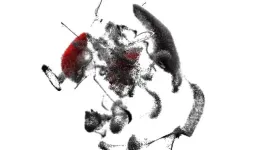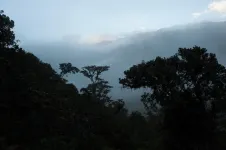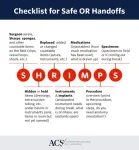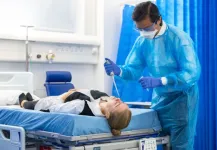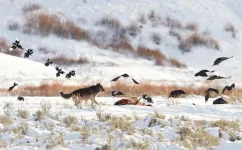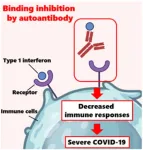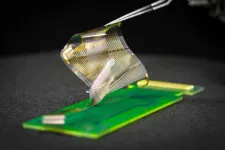(Press-News.org)
Scientists at EPFL have achieved a significant research milestone in the field of spinal cord injuries—mapping out the cellular and molecular dynamics of paralysis in unprecedented detail with their open-source project 'Tabulae Paralytica'. Grégoire Courtine and his team have integrated cutting-edge cell and molecular mapping technologies with artificial intelligence to chart the complex molecular processes that unfold in each cell after spinal cord injuries (SCI). Published in Nature, this seminal work not only identifies a specific set of neurons and genes that plays a key role for recovery but also proposes a successful gene therapy derived from its discoveries.
Understanding why spinal cord injuries are nearly impossible to heal sheds light on the significance of this breakthrough. The human spinal cord is one of the most complex biological systems known to science—it is a mechanical, chemical, and electrical arrangement of different types of cells working in harmony to produce and regulate a multitude of neurological functions, including a natural, elegant gait. This cellular complexity amplifies the challenges to effectively treating paralysis caused by injury to the spinal cord.
Until now, traditional imaging and mapping methods have offered a generalized view of the cellular mechanisms of SCI. But this lack of specificity blurs the distinct roles and reactions of individual cell types and has hindered the development of targeted treatments, as therapies could not be finely tuned to address specific cellular dynamics.
“In this study, we aimed for nothing less than a revolution in the biological understanding of spinal cord injury,” says Courtine. "By offering an exceptionally detailed view of the cellular and molecular dynamics of spinal cord injury in mice across space and time, the four cell atlases comprising the Tabulae Paralytica close a historic knowledge gap, paving the way for targeted treatments and enhanced recovery."
The first treatment to come from this new understanding of the intricate cellular dynamics of paralysis is a targeted gene therapy. Developed in collaboration with fellow EPFL Neuro X professor Bernard Schneider, the therapy leverages a crucial finding: the researchers found that a specific type of support cell called an astrocyte loses its ability to respond to injury in aged animals.
“For much of the last hundred years, it was believed that astrocytes were detrimental to neural repair. Our data further supports overturning this notion and suggests an essential protective role for these cells that can be exploited to repair spinal cord injuries”, says EPFL’s Mark Anderson, senior author of the study.
Another key result of the study is the identification of a specific subset of neurons, known as Vsx2 neurons, that are inherently equipped to promote recovery.
“Our previous studies have pointed in their direction, but with this new, fine-tuned understanding, we can now say for certain that Vsx2 neurons are largely responsible for neural circuit reorganization, meaning that they are by far the most interesting population of neurons for repairing spinal cord injury,” asserts Jordan Squair, another senior author of the study from EPFL.
To create the first-ever comprehensive cellular map of spinal cord injuries in rodent models, the researchers employed two innovative technologies. The first, single cell sequencing, examines the genetic makeup of each cell. While it has been employed for over a decade, recent advances allowed the scientists to scale up the process like never before, generating detailed accounts of millions of spinal cord cells.
Secondly, spatial transcriptomics—a cutting-edge technology that shows us where these cellular activities occur—expanded the map across the entire spinal cord, preserving the spatial context and relationships between different cell types.
The new data is so vast that new machine learning techniques needed to be developed specifically to harness its intricacy. This computational approach leverages artificial intelligence to not only chart the immediate genetic responses of individual cells but also situate these responses within the physical and temporal landscape of the spinal cord.
“We now have a detailed map that not only shows us which cells are involved but also how they interact and change over the course of the injury and recovery process,” explains Squair. “This comprehensive understanding is crucial for developing treatments that are precisely tailored to specific cells and unique requirements for repair of varying injuries, paving the way for more effective and personalized therapies.”
The 'Tabulae Paralytica' is a significant milestone in SCI research. It combines scientific insight with technological innovation to open new horizons in the understanding and treatment of SCI. Although this study has been conducted using rodent models, the insights gained are expected to translate into clinical applications, where Courtine and his team have been making significant advances for over a decade.
END
In the late 2000s, Scott Saleska noticed something strange going on in the Amazon rainforest.
In 2005, a massive drought struck the region. Two years later, Saleska – a University of Arizona professor in the Department of Ecology and Evolutionary Biology – published surprising research that used satellite images to find that the drought resulted in more green growth in large swaths of the Amazon. On the other hand, field researchers saw plants brown and some die in response to the drought.
Research published today in the journal Nature reveals what caused the scientific mismatch. Shuli Chen, a doctoral degree candidate in ecology and evolutionary ...
Key Takeaways
The introduction of a standardized handoff protocol substantially improved communication among OR staff, ensuring critical information was transferred consistently.
The enhanced communication reduced potential patient safety risks and highlighted the importance of standardized handoff tools in improving surgical outcomes.
CHICAGO (June 19, 2024) — A new study showcases a successful quality improvement program that significantly enhances surgical safety. By implementing a standardized handoff protocol, known as SHRIMPS, the study demonstrates how ...
Scientists have discovered novel immune responses that help explain how some individuals avoid getting COVID-19.
Using single-cell sequencing, researchers from the Wellcome Sanger Institute, University College London (UCL), Imperial College London, the Netherlands Cancer Institute and their collaborators, studied immune responses against SARS-CoV-2 infection in healthy adult volunteers, as part of the world's first COVID-19 human challenge study1. Not all exposed participants went on to develop a COVID-19 infection, ...
Corvallis, OR — A study published today in the journal BioScience sheds light on the importance of gray wolves in western United States. Led by William Ripple, a scientist at Oregon State University and the Conservation Biology Institute, the research delves into the implications of large predator absence on plant and animal communities, and ecosystem functions. It calls attention to “shifting baselines” wherein increasingly degraded conditions are viewed as reflecting the historical state of a system.
"By the 1930s, wolves were largely absent from the American West, including its national parks. Most published ecological ...
New research published in the journal BioScience describes how the removal large predators is often unrecognized in ecological scholarship, creating an issue of "shifting baselines," with profound implications for restoration efforts.
A team led by researchers from Oregon State University, including co-lead authors William J. Ripple and Christopher Wolf, reviewed 96 published studies from 1955 to 2021 that were conducted in 11 national parks where gray wolves had been extirpated. Their analysis found that ...
Philadelphia, June 19, 2024 – Infant feeding, involving breastfeeding, formula feeding, and the introduction of solid foods, is crucial for parenting. Pregnant and postpartum individuals with intellectual and developmental disabilities face challenges in infant feeding compared to parents without intellectual and developmental disabilities, often due to ableism and inaccessible care. The Special Supplemental Nutrition Program for Women, Infants, and Children (WIC) program, a federal nutrition initiative, can address these disparities by offering inclusive and accessible support and counseling.
A recent research article in the Journal of Nutrition Education and Behavior, published ...
The Sun Corridor in Arizona in the semi-arid Southwestern U.S. is a land of seeming unlimited growth that is constantly colliding with physical constraints. It is mountainous but also home to a large valley that includes one of the fastest growing metropolitan areas in the U.S.
While experiencing explosive growth, the Phoenix metropolitan area faces an uncertain future due to prolonged drought and fluctuating seasonal water availability. Planning for the future, especially in terms of water, ...
The roots of the project formed during a CASRI conference in 2018 when experts from various organizations learned about red spruce genetic research being conducted by Keller’s lab and collaborators at University of Maryland with funding by the National Science Foundation. The group saw an opportunity to join forces to take an on-the-ground approach to utilizing the genetic data for red spruce restoration. In 2019, funding from the Wildlife Conservation Society’s Climate Adaptation Fund enabled this group to pursue science-informed restoration at scale.
“Science-informed ...
Even though COVID-19 manifests as a mild and short-lived disease in most people, some suffer extremely severe symptoms; in the worst cases, these patients die due to complications such as respiratory failure or thromboembolism. It is well-known that factors such as age and underlying medical conditions like diabetes or immunodeficiencies increase vulnerability to severe COVID-19. However, some patients still experience severe COVID-19 without any apparent reason.
One possible explanation may lie in auto-antibodies, which are antibodies that erroneously target specific proteins produced by one’s own body. In normal circumstances, type I interferons ...
Video: https://youtu.be/-7ggs6e2UXI?si=lnFqEscjJh-91n64
B-roll: https://youtu.be/pvNBa733ICw?si=DotUuQkxVgMQ0jY7
The Federal Drug Administration approved a clinical trial to test the effectiveness of an electronic grid that records brain activity during surgery, developed by engineers at the University of California San Diego.
The device with nanoscale sensors records electrical signals directly from the surface of the human brain in record-breaking detail. The grid’s breakthrough resolution could provide better guidance for planning and performing surgeries to remove brain tumors and treat drug-resistant epilepsy.
The grid’s higher resolution ...
